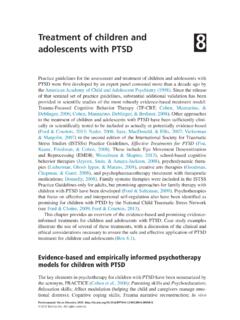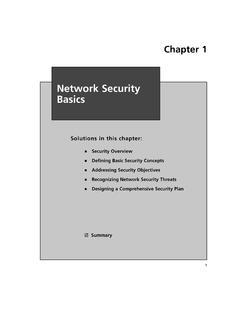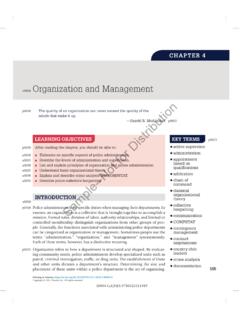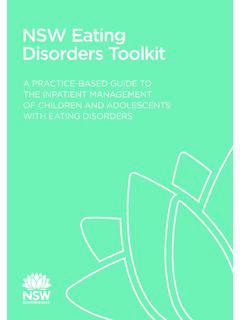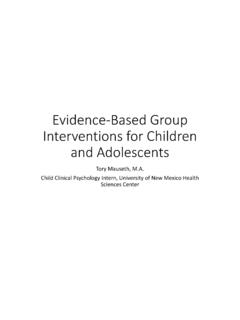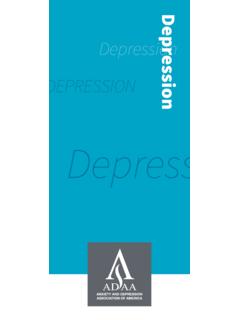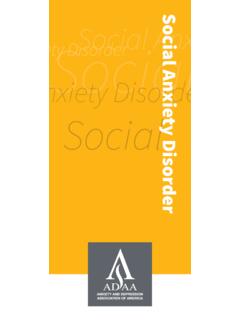Transcription of 8. Treatment of children and adolescents with PTSD
1 Posttraumatic Stress Disorder. DOI: 2015 Elsevier Inc. All rights of children and adolescents with PTSDP ractice guidelines for the assessment and Treatment of children and adolescents with ptsd were first developed by an expert panel convened more than a decade ago by the American Academy of Child and adolescent Psychiatry (1998). Since the release of that seminal set of practice guidelines, substantial additional validation has been provided in scientific studies of the most robustly evidence-based Treatment model: Trauma-Focused Cognitive Behavior Therapy (TF-CBT; Cohen, Mannarino, & Deblinger, 2006; Cohen, Mannarino, Deblinger, & Berliner, 2008).
2 Other approaches to the Treatment of children and adolescents with ptsd have been sufficiently clini-cally or scientifically tested to be included as actually or potentially evidence-based (Ford & Courtois, 2013; Nader, 2008; Saxe, MacDonald, & Ellis, 2007; Vickerman & Margolin, 2007) in the second edition of the International Society for Traumatic Stress Studies (ISTSSs) Practice Guidelines, Effective Treatments for ptsd (Foa, Keane, Friedman, & Cohen, 2008). These include Eye Movement Desensitization and Reprocessing (EMDR; Wesselman & Shapiro, 2013), school-based cognitive behavior therapies (Jaycox, Stein, & Amaya-Jackson, 2008), psychodynamic thera-pies (Lieberman, Ghosh Ippen, & Marans, 2008), creative arts therapies (Goodman, Chapman, & Gantt, 2008), and psychopharmacotherapy ( Treatment with therapeutic medications; Donnelly, 2008).
3 Family systems therapies were included in the ISTSS Practice Guidelines only for adults, but promising approaches for family therapy with children with ptsd have been developed (Ford & Saltzman, 2009). Psychotherapies that focus on affective and interpersonal self-regulation also have been identified as promising for children with ptsd by the National Child Traumatic Stress Network (see Ford & Cloitre, 2009; Ford & Courtois, 2013).This chapter provides an overview of the evidence-based and promising evidence-informed treatments for children and adolescents with ptsd .
4 Case study examples illustrate the use of several of these treatments, with a discussion of the clinical and ethical considerations necessary to ensure the safe and effective application of ptsd Treatment for children and adolescents (Box ).Evidence-based and empirically informed psychotherapy models for children with PTSDThe key elements in psychotherapy for children with ptsd have been summarized by the acronym, PRACTICE (Cohen et al., 2006): Parenting skills and Psychoeducation; Relaxation skills; Affect modulation (helping the child and caregivers manage emo-tional distress); Cognitive coping skills; Trauma narrative reconstruction; In vivo 8 Posttraumatic Stress Disorder368 Box Key Points 1.
5 Psychotherapy for children with ptsd follows the three-phase Treatment model established for psychotherapy with adults with ptsd , including ensuring that the child is safe from further traumatization and prepared to engage in and benefit from therapy; reducing avoidance of memories of past traumatic experiences; and helping the child and family to restore or achieve a positive adjustment in as many walks of life as possible. 2. The core goal for the Treatment of children with ptsd is to enable them (and their caregivers) to attain what Harvey (1996) described as mastery or authority in relation to their own memories including but not limited to memories of traumatic events.
6 3. The essential elements in all approaches to psychotherapy for children with ptsd have been summarized by the acronym PRACTICE (Cohen et al., 2006): Parenting skills and Psychoeducation; Relaxation skills; Affect modulation (helping the child and caregivers manage emotional distress); Cognitive coping skills; Trauma narra-tive reconstruction; In vivo application of skills (practicing skills and confronting reminders of traumatic experiences in daily life); Conjoint parent-child sessions ( Treatment sessions with the parent and child together); and Ensuring safety and posttherapy adjustment.
7 4. The ptsd psychotherapy for children with the strongest scientific evidence base is TF-CBT. TF-CBT consistently has been shown to be more effective than traditional supportive psychotherapy and was recently found to be equally effective alone as when combined with medication therapy. 5. Three other cognitive behavior therapy models for children and adolescents with ptsd have been sufficiently clinically or scientifically tested to be included as actually or potentially evidence-based: EMDR, cognitive behavioral intervention for traumatized students (CBITS which is conducted in schools), and Parent-Child Interaction Therapy (PCIT [Parent Child Interaction Therapy] which is conducted with parents of abused children , including parents who have been abusers).
8 6. A dyadic psychotherapy that takes a psychodynamic approach and emphasizes restoring or enhancing parent-child attachment (and that includes a parent as well as the traumatized child in all sessions) has been found in scientific studies to be effective with young children . 7. Creative arts therapies and family systems therapies are widely used clinically and were included in the ISTSS Practice Guidelines as promising treatments (although neither has demonstrated effective in scientific studies with traumatized children ).
9 8. Psychotherapies that focus on affective and interpersonal self-regulation also have been identified as promising for children with ptsd by the National Child Traumatic Stress Network, including TARGET, Life Skills Life Story, Real Life Heroes, and Structured Psychotherapy for adolescents Responding to Chronic Stress (SPARCS). 9. Treatment with children and families is always relational. ptsd is so debilitating for children that therapists may feel compelled to achieve large goals such as complete recovery in order to prevent the child and parent from suffering disappointment in the face of what may seem to be intractable problems.
10 The challenge for therapists is to shift from emphasizing overcoming pathology or deficits as the goal of Treatment to focusing on a series of smaller goals that are of immediate personal relevance to the child and caregiver.(Continued) Treatment of children and adolescents with PTSD369application of skills (practicing skills and confronting reminders of traumatic experi-ences in daily life); Conjoint parent-child sessions ( Treatment sessions with the parent and child together); and, Ensuring safety and posttherapy adjustment.
